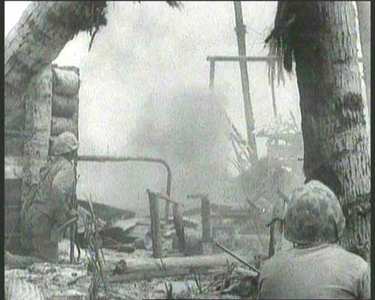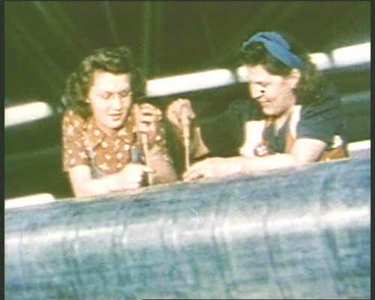Review of Hell In The Pacific (Documentary)
Introduction
A gruesomely compelling, intelligently researched four-part documentary by Jonathan Lewis, which details the conflict in the Pacific theatre from Pearl Harbor to the dropping of the hydrogen bomb. Interspersing a huge library of archive film with personal recollections from scores of eyewitnesses, this film attempts to construct an objective picture of the war in the Pacific, free from the propagandistic drive of US interests during the war and the cruel dogma executed so mercilessly by the Japanese under Emperor Hirohito. Instead, Lewis sensibly (and perhaps unavoidably given our PC times) opts for a stance that admits that both sides acted with the gloves well and truly off.

Video
Originally screened on Channel 4, this documentary (as far as memory serves) was presented in 16:9 widescreen, it’s a disappointment therefore that this disc is only in 4:3. However, the quality of the image is very good given its humble origins on television with the only visible fault being a deterioration in focus in some shots.

Audio
Serviceable stereo, the general sonic make-up of the film is a personal recollection from one of the eyewitnesses followed by some (usually violent) period footage.

Features
Firstly, the Bonus Features menu is rather irritating to navigate, and it doesn’t yield too much of interest once you figure it out: a good picture gallery accompanied by the program’s elegiac score; a timeline detailing the order of events and some added textural information about the events themselves that is useful but rather too brief given the emotional depth of the documentary itself.

Conclusion
Admittedly, any documentary which promises a balanced, non-discursive, journalistic approach to the subject of world war two is immediately greeted with both excitement and suspicion. Excitement, because we’ve been saturated with far too much Hollywood revisionism of this particular period of history and suspicion because one fears that any program to forcibly rebuke the claim may simply be covering its own guilt at doing the same thing. Fortunately, ‘Hell in the Pacific’ is (or if not, then should be) the definition of balanced historical documentary: there are harrowing accounts of atrocities committed on all sides of the conflict (some quite unbearable moving) as well as lighter moments and instances of considerable bravery, camaraderie and compassion recollected by a wide variety of eyewitness accounts.
Structurally, this is by no means perfect, the film’s quartering (from ‘Inferno’ to ‘Apocalypse’) is rather perfunctory and the film’s fidelity to the historical time-line isn’t quite as rigorous as one would have liked given the amount of information and historical data we’re being asked to decode and consume. However, these are relatively minor complaints for a documentary that for once allows the content to override an unobtrusive formal design (save for a truly haunting score). What we’re really interested in here is the accounts themselves, and the excellent assembly of period footage, some of which has never be seen before and is truly shocking: one particularly astounding piece of footage from a US propaganda film shows a homely Middle-American woman politely announcing how she would like to see the Japanese wiped off the face of the Earth.
For anyone with even a passing interest in the subject, this is a superior and highly involving introduction to some forgotten horrors and a prescient reminder of the true cost of war waged on racial hatred. Furthermore, the film implicitly questions the nature of moral discourse itself, as one veteran reminds us: ‘Some people may say we were cruel and inhumane... but you weren’t there, we were.’ Hindsight is a wonderful thing for those of us fortunate enough to be able to afford it, but for these people, and as far as these horrors are concerned, morality simply doesn’t have the stomach for what human beings willfully do to one another.
Your Opinions and Comments
Be the first to post a comment!